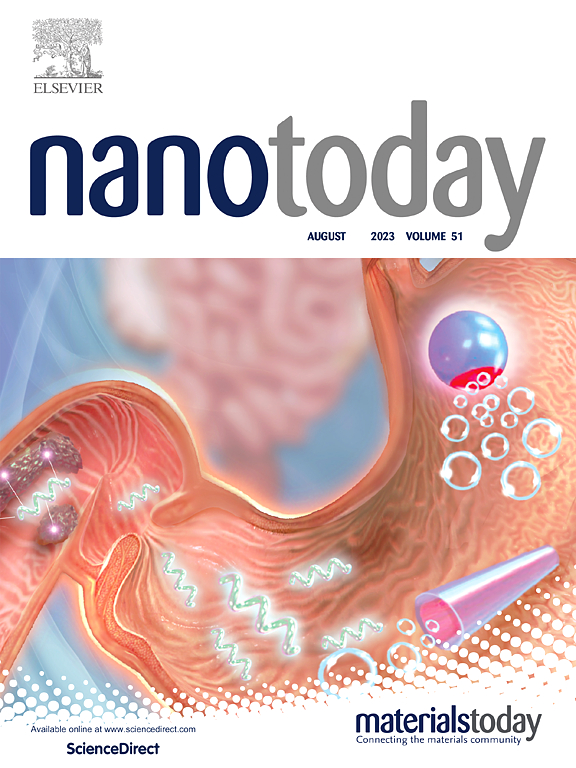Cucurbit[7]uril-achieved supramolecular nanoplatform capable of targeted depletion of specific pathogen for efficient bacterial keratitis therapy
IF 13.2
1区 材料科学
Q1 CHEMISTRY, MULTIDISCIPLINARY
引用次数: 0
Abstract
Antibacterial supramolecular nanoplatforms have attracted increasing attention in the field of biomedicine owing to their unique properties. Herein, a cucurbit[7]uril-mediated targeted supramolecular nanoparticles (MPPM⸦CB[7]) is developed to enable selective elimination of pathogenic bacteria from complex communities by using atom transfer radical polymerization (ATRP) to graft antibacterial quaternary ammonium salt monomers (1-pentyl-1-quaternary ammonium-3-vinyl-imidazole (PQVI)) and Escherichia coli (E. coli)-targeted glucosamine units (2-(methacrylamido)-glucopyranose, MAG) onto magnetic nanoparticles (MNPs), and then assembling PQVI with cucurbit[7]uril (CB[7]) via host-guest complexation. Interestingly, MPPM⸦CB[7] host–guest complex exhibits enhanced targeting toward E. coli as compared to MPPM, and the antibacterial activity is turned on through the disassembly of the MPPM⸦CB[7] host–guest complex upon the addition of competitive amantadine (AD) in situ, accompanied by efficient antibacterial performance against pathogenic bacteria Escherichia coli K12 BW25113 (107 colony-forming units, 99.99 %) without harming the probiotic members Lactococcus lactis ATCC 11454 (L. lactis). Particularly, high in vivo therapeutic effectiveness is achieved in E. coli and L. lactis-induced bacterial keratitis. Besides, the magnetic recovery of MPPM reduces its residue in the body, thereby lowering the potential side effects. This CB[7]-mediated supramolecular nanoparticles may provide a new strategy for treatment of ocular disease and have the potential to replace antibiotic treatment.
求助全文
约1分钟内获得全文
求助全文
来源期刊

Nano Today
工程技术-材料科学:综合
CiteScore
21.50
自引率
3.40%
发文量
305
审稿时长
40 days
期刊介绍:
Nano Today is a journal dedicated to publishing influential and innovative work in the field of nanoscience and technology. It covers a wide range of subject areas including biomaterials, materials chemistry, materials science, chemistry, bioengineering, biochemistry, genetics and molecular biology, engineering, and nanotechnology. The journal considers articles that inform readers about the latest research, breakthroughs, and topical issues in these fields. It provides comprehensive coverage through a mixture of peer-reviewed articles, research news, and information on key developments. Nano Today is abstracted and indexed in Science Citation Index, Ei Compendex, Embase, Scopus, and INSPEC.
 求助内容:
求助内容: 应助结果提醒方式:
应助结果提醒方式:


